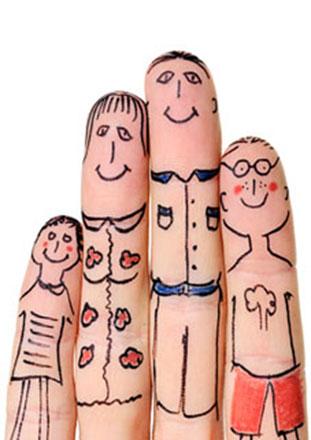You are here
How parents behave is linked to suicide risk
By AFP - Dec 06,2017 - Last updated at Dec 06,2017

photo courtesy of carers.net.nz
MIAMI — Adolescents who feel their parents rarely express interest in their emotional well-being are far more likely to consider suicide than youths who see their parents as involved, US researchers said on Tuesday.
The findings by the University of Cincinnati come as the suicide rate among teenagers rises in the United States, adding to concern among parents, educators and health experts.
In the past month alone, a 10-year-old girl in Colorado and a 13-year-old in California hanged themselves. Their parents say bullying at school contributed to the girls’ deaths.
“Parents ask us all the time, ‘What can we do?’” said Keith King, who coordinates the University of Cincinnati’s health promotion and education doctoral programme.
“Kids need to know that someone’s got their back, and unfortunately, many of them do not. That’s a major problem.”
King and his colleague, Rebecca Vidourek, based their findings on a 2012 national survey of people 12 and older that revealed a significant link between parental behaviours and thoughts of suicide among adolescents.
They found that those most affected by parenting behaviors were 12- and 13-year-olds.
Children in this age group who said their parents rarely or never told them they were proud of them were nearly five times more likely to have suicidal thoughts, said the researchers.
They were also nearly seven times more likely to formulate a suicide plan and about seven times more likely to attempt suicide than their peers.
An unusually high risk of suicide was also seen in 12- and 13-year-olds whose parents rarely or never told them they did a good job or helped them with their homework.
Among older teens, aged 16 and 17, those who said their parents rarely or never said they were proud of them were three times more likely to have suicidal thoughts — almost four times more likely to make a suicide plan and attempt suicide — than peers whose parents sometimes or often expressed pride in their children.
‘Positively connected’
Researchers acknowledged that the survey was based on youths’ perceptions of their parents behaviour, and that some parents may disagree with how their children responded.
“Youth perceptions are extremely important to suicidal ideation and attempts,” King told AFP in an e-mail.
“Sometimes parents think they are involved, but from the perspective of the adolescent, they are not.”
Some ways for parents to protect against suicide include “direct communication and direct interactions that are authoritative in nature between the parent[s] and the adolescent”, he added.
Teens may also be more likely to try drugs or risky sexual behaviour if parents are not adequately engaged, King said.
“A key is to ensure that children feel positively connected to their parents and family,” said Vidourek, who serves as co-director of the Centre for Prevention Science, along with King.
The study did not delve into completion of suicide by teenagers, but whether they harboured suicidal thoughts, made plans or had attempted to take their own lives.
A report by the US Centres for Disease Control and Prevention earlier this year found that the suicide rate among teen girls doubled from 2007 to 2015, and rose 30 per cent among boys.
About 5,900 youths between the ages of 10 and 24 committed suicide in the United States in 2015, according to government figures.
Experts say a range of factors contribute to suicide risk, including depression and mental health, negative influences on social media, bullying, financial struggles and exposure to violence.
King said certain basic parental behaviours may help.
“You can tell them you’re proud of them, that they did a good job, get involved with them and help them with their homework,” said King.
The research was presented at this year’s American Public Health Association conference in Atlanta.
Related Articles
Three in four parents are unaware when their teens have recurrent thoughts about suicide, and a big part of the problem may be that adolesce
When parents of boys do not enjoy parenthood or do not spend a lot of time playing or talking with them, their sons may be more likely
A positive parenting style might protect kids from the negative effect that growing up in poverty is thought to have on their brain developm














